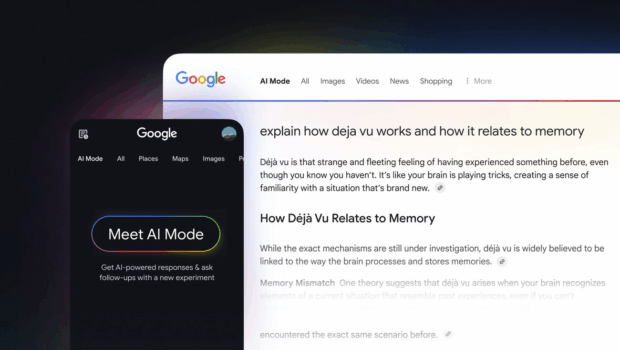2024 Tech Trends: What They Mean For Your Business
- by Ilona K.

Table of contents
Feels like winter holidays were just yesterday, and yet we’re already in February! In order to make the most of the time where strategic planning happens, check out the most prominent technology trends of the year, what they mean for your business, and how to use them to drive growth.
Late last year, Gartner, an authoritative research and consulting company, published its annual list of top 10 strategic technology trends for 2024. While some of those might sound as a bit more distant future (especially if you run a small company), we recommend starting to factor them into your business decisions over the past 3 years to stay competitive.
Not all of them would be equally beneficial for every business – however, taking time to evaluate potential impact of each innovation ensures you don’t miss out on strategic opportunities. Let’s explore those top-10 trends and their impact on business decisions.
Gartner’s Top 10 Tech Trends for 2024
This list is aimed for businesses to stay on top of the latest tech trends, as well as to adopt these innovations to achieve business goals faster, especially in the AI era.
- AI Trust, Risk and Security Management (AI TRiSM)
Despite a surge of interest in AI (artificial intelligence), many people still cannot explain what it truly means and what impact it has on their life and work. Moreover, no one can yet fully comprehend how reliable, trustworthy and secure AI models are. AI TRiSM (trust, risk and security management) is a framework to proactively identify AI risks and address them.
Why should you care? If you are developing an AI-based service, or use AI tools in your business (even to collect ideas with ChatGPT), AI TRiSM framework can help you establish governance, compliance and data privacy for your own systems and for your customers.
- Continuous Threat Exposure Management (CTEM)
Cybercriminals become more ingenious each year, changing their approaches and types of attacks fast, leaving no organization able to ensure security against every threat. CTEM (continuous threat exposure management) is a technological approach to monitor and prioritize threats that your business is most vulnerable to.
Why should you care? Even if you regularly patch your cybersecurity shield against known attacks and breach episodes, it doesn’t mitigate your future exposure. Below you can find a 5-step process of setting up a CTEM system.
- Sustainable Technology
According to Gartner, by 2027, 80% of CIOs will have performance metrics tied to the sustainability of the IT organization. Sustainable technology is a framework of solutions to enable environmental, social and governance (ESG) outcomes for the company and its customers.
Why should you care? Incorporating a progressive thinking about not only sustainability of internal IT operations, but also about the sustainability of outcomes from using technology helps optimise costs, efficient asset utilization and position your business as a responsible industry actor.
- Platform Engineering
Platform engineering is an emerging approach to accelerate the delivery of applications and the pace at which they produce business value. This trend is most applicable to technology companies aiming to speed up their development cycles, as it helps foster collaboration between developers and business stakeholders.
Why should you care? If you have an in-house development team, this approach can improve their productivity and accelerate product delivery with automated operations and reusable components. By 2026, 80% of large software engineering organizations will establish platform engineering teams to coordinate efforts between software developers and other business functions,
- AI-Augmented Development
AI Augmentation is an integration of code generation tools like GitHub Copilot, Amazon CodeWhisperer and Google Codey into processes from planning to testing. Some tools can also translate one programming language into another, reducing time on code library migration.
Why should you care? AI-augmented development is mostly useful for software and app development companies. Nevertheless, if you run a small business, getting support from AI tools to improve your website’s code or software product means less costs, quicker time to market and less workload for in-house developers. Gartner analysts predict that by 2027, 70% of professional developers will use AI-powered coding tools, up from less than 10% today.
- Industry Cloud Platforms
Industry cloud platforms combine software, platform and infrastructure as a service (IaaS) capabilities to provide solutions for different verticals. They are modular platforms, based on a catalog of industry-specific packaged business capabilities.
Why should you care? Specific business verticals are often not efficiently serviced by generic cloud solutions. Industry cloud platforms offer value of adaptable and relevant industry solutions, relevant for your specific market segment.
- Intelligent Applications
Intelligent applications use data from your business transactions and external sources, and process it with help with AI. They learn from interactions and generate smart answers to your business questions. For example, a property insurance company can benefit from an app monitoring weather and automatically filing a claim when some anomalies occur. As a result, a business gets a constant connection between data analysis and decision making.
Why should you care? Firstly, a strategic decision-making model can become your long-term advantage, regardless of the market you’re working in. Secondly, using data in decision making can mitigate cost risks. And finally, the development of intelligent apps became drastically cheaper with generative AI, so it’s a great time to get onboard.
- Democratized Generative AI
By now, you most likely have already tried a generative AI application, such as ChatGPT or Google Bard. In a big picture, generative AI has a strong potential to automate many manual tasks and, as a result, open access to information, increase productivity, improve existing processes, reduce costs and uncover new growth opportunities for businesses of any size.
Why should you care? By 2026, more than 80% of enterprises will have used generative AI, up from less than 5% in 2023. Even though there are known risks discussed above, wider adoption of generative AI for business ultimately means democratization of information and skills, and innovation.
- Augmented Connected Workforce
A trend on the verge of post-pandemic remote working and AI performing mundane tasks, augmented connected workforce is perhaps one of the most sensitive trends we’re discussing here. In a company of the future, the workforce is connected not by a shared physical location, but by technology, and consists of both ‘human’ and ‘virtual’ employees. The latter are represented by AI tools and services able to perform algorithmic routine tasks, freeing up time for human employees to perform activities requiring human intelligence.
Why should you care? There is no better time than now to start thinking about how your workforce will look like in 3-5 years. What tasks can be efficiently delegated to generative AI apps? What processes can be automated? And what skillset would your employees need to navigate augmented workforce reality (prompt – an ability to delegate across a range of real and virtual colleagues would definitely be a bonus)?
- Machine Customers
Who is the main user of your product or service right now? Regardless of the answer, our bet is you’ve imagined a human. At the same time, Gartner analysts predict a rise of AI-enabled machine customers — nonhuman economic actors that obtain goods and services in exchange for payment. The simplest example right now would be algorithmic stock trading, but the implications are much wider.
Why should you care? Starting with the obvious – buying behaviour of a machine will be different from the one of a human customer. So the insights and skills of selling your products to humans might be irrelevant when trying to sell to AI-powered customers, whose behaviour is more logical and rational. One thing you can do right now is make your product or service info easily readable for machines and enable validation techniques separating bots from legit AI buyers.
What 2024 Tech Trends mean for your business
We’ve highlighted some key implications of Gartner’s 2024 tech trends on your business, alongside possible actions to take, in line with each trend. However, from a top-level perspective, all 10 trends above serve three key strategic goals:
- Protect your technology investment
- Utilize the rise of the builders
- Deliver the value to customers
In particular, those trends can serve building a more efficient IT company, regardless of its size. And if you’re running one, consider exploring domain name options with it.com Domains, offering addresses in the .it.com zone to demonstrate close ties with IT business.
Overall, we strongly recommend examining each of the trends in relation to your specific business goals more closely. Adopting even one or two innovative approaches can give your business a much-needed competitive edge and help save costs in the long-term.
Want to stay on top of tech industry trends? Visit it.com Domains’ blog and follow us on social media.

Read also




